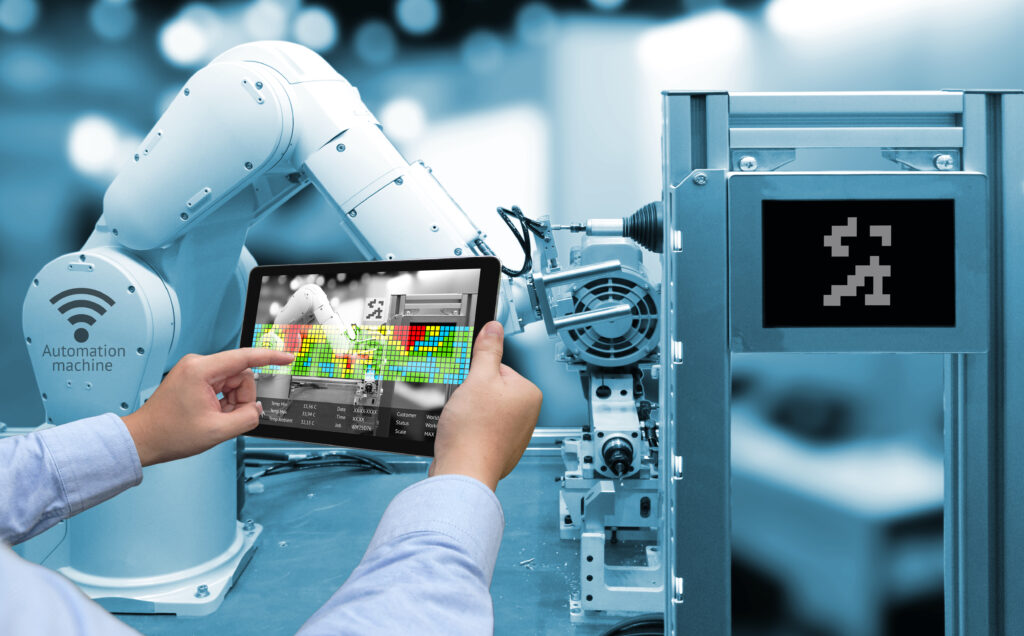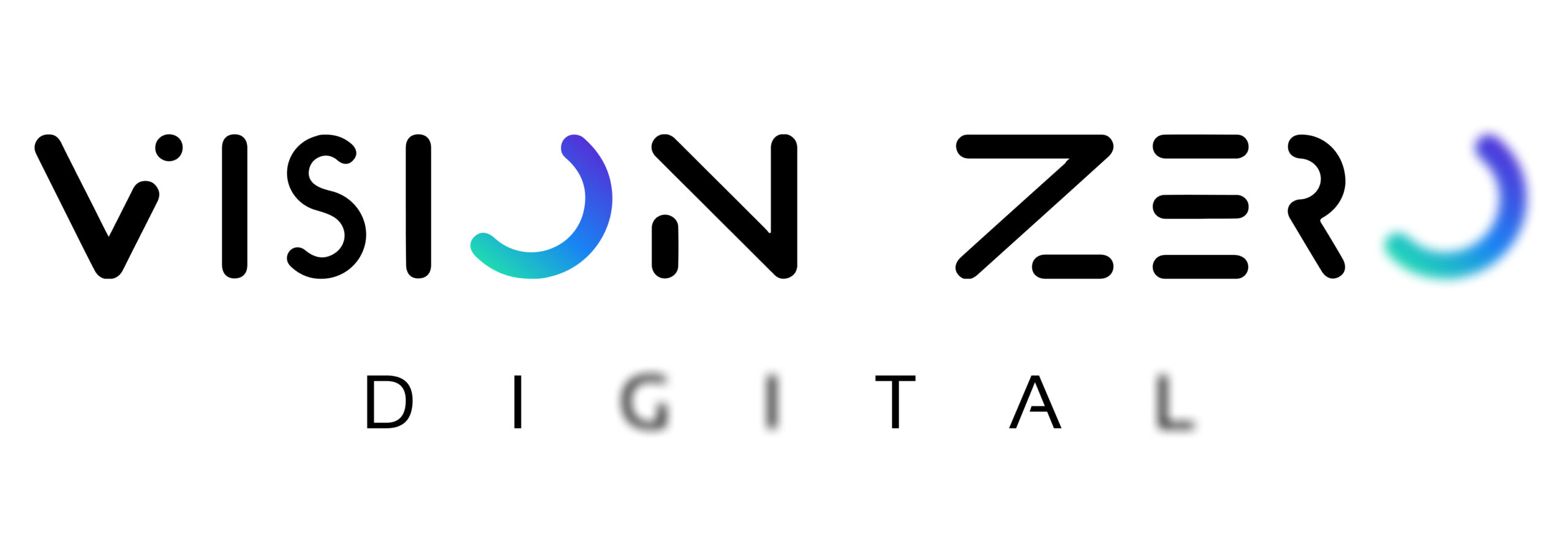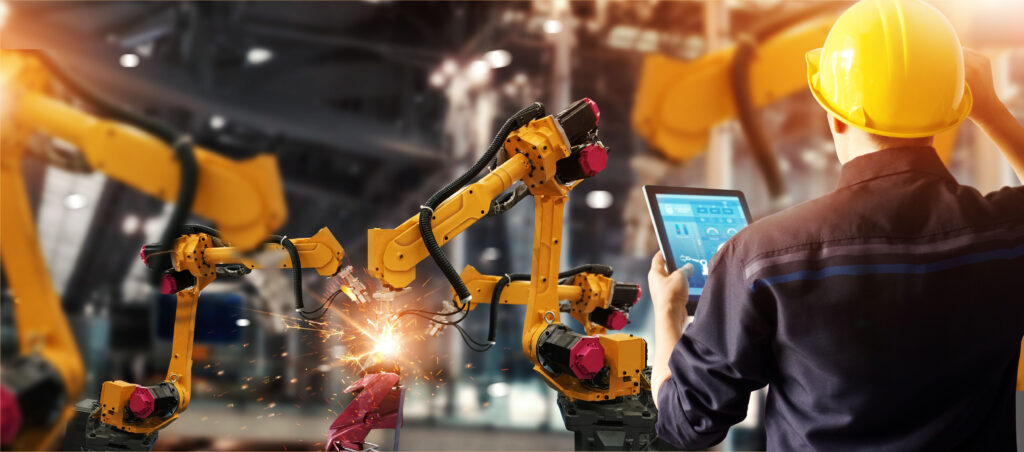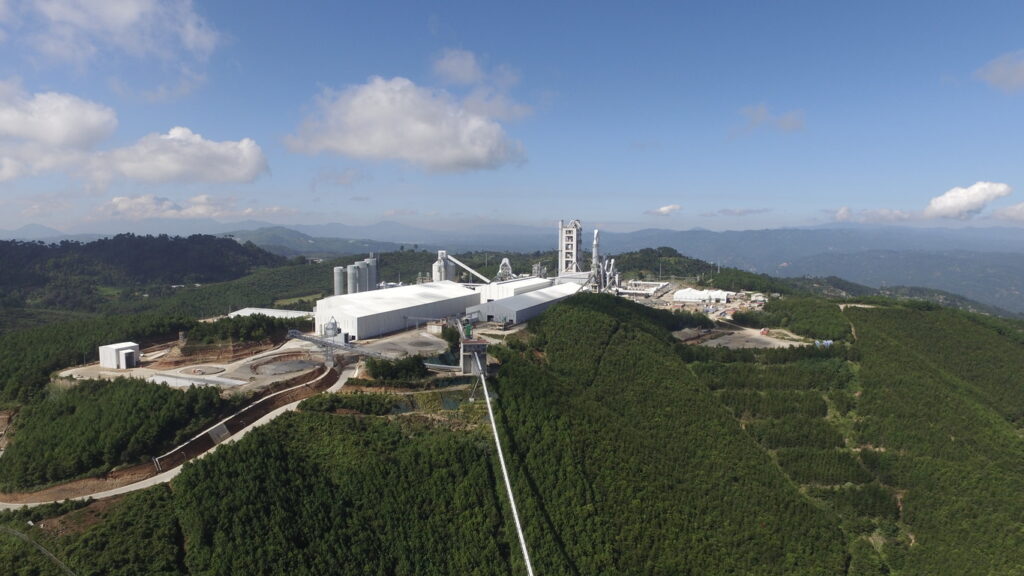Digital transformation is an inevitable and desired trend

Digital transformation covers almost all areas of human life. Labor protection is no exception. Soon we will witness the evolution of tools and production processes. What business needs today? To optimize costs and increase the efficiency of processes. Modern technologies are becoming a direct tool in achieving these goals.
Analysts agree: we have a bright future ahead. Thanks to the digital transformation, the new generation of production will become more efficient, sustainable and environmental friendly. To date, a number of concepts have already been developed: Industry 4.0, Autonomous Drive, Digital Connected Worker, etc. They are actively included in investment plans and development strategies for various sectors of the economy.
The development of digital technologies, such as artificial intelligence (AI), robotics, the widespread adoption of the Internet of Things (IoT) and Big Data, wearables, mobile devices and online platforms, is changing the nature and place of work in most companies. The mobility of employees increases, and their work becomes more intellectual. Smart machines take on a wide range of not only typical, but also cognitive tasks that were previously performed by humans.
Much of the discussion around the digitalization of jobs is related to the number of workplaces. However, the issue of the quality of workplaces is also acute. Here, occupational health and safety becomes an important aspect, acquiring a completely new set of tools.
With the development and integration of technologies in the company, two processes occur simultaneously that affect employees. On the one hand, automation of production threatens the existence of a number of professions and inexorably leads to job cuts. On the other hand, the introduction of new technologies contributes to improving the quality of working conditions of employees. Digitalization guarantees safer and healthier workplaces for everyone in the digital world. The possible negative consequences of digitalization for the safety and health of employees are minimized, new opportunities and tools for prevention appear.
Robotics allows us to get workers out of dangerous areas. Now we can transfer a number of tasks to fast, precise and tireless machines, thereby improving the quality of the work performed. Collaborative robots (Cobots) – the so-called robots that can work in production together with a person – can facilitate access to work for many people who, for various reasons, are isolated from society and even extend the term of employment. For example, for disabled and elderly employees, the range of professions can be significantly expanded. Many of them will be able to become in-demand specialists in those industries that were previously inaccessible to them, due to their nature.
Like any social phenomenon, digitalization is fraught with two sides. This is both a challenge and an opportunity for humanity. Maintaining a balance depends on the correct application of technologies and the level of social regulation tools development. To do this, it is necessary to take into account social, political and economic trends: the demographics of the labor force, the state of the economy, social relations, management and skills.
The European Agency for Occupational Safety and Health (EU-OSHA) provides examples of occupational health and safety strategies that can help to mitigate the health and safety challenges associated with digitalization:
- the development of an ethical framework for the digitalization, codes of conduct and good governance;
- “prevention through design”, which unites the human factor and the design of new machines that focuses on the inclusion of an employee;
- involvement of employees in the development and implementation of any digitalization strategies;
- collaboration between scientists, industry, social partners, and governments in digital research and innovation, with a view to appropriately addressing the human dimension; creation and improvement of the regulatory framework for determining the obligations and responsibilities of the employer and employees in connection with the emergence of new technologies, changes in working processes;
- adapting the system of education and training of employees;
- providing effective health and safety services to all employees in the new digital world of work.
(information is available at https://osha.europa.eu/en/emerging-risks/developments-ict-and-digitalisation-work access date: 02.03.2021)
The process of digitalization has already begun and is inevitably shaping our future today. From sophisticated robots replacing field workers to additive manufacturing technologies (such as 3D printing) that produce human organs – the potential for digitalization innovation to meet growing demand and increase productivity is enormous. Our task today is to try to curb these processes and do everything possible to ensure that a person, an ordinary employee, remains safe in the ship of progress.






Responses